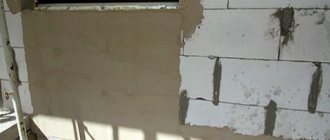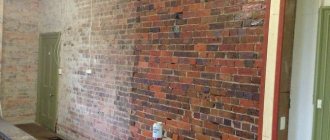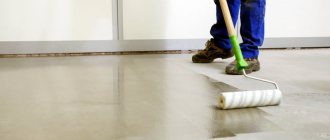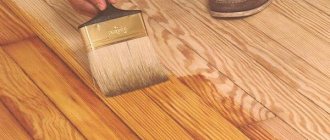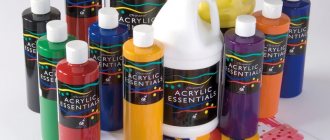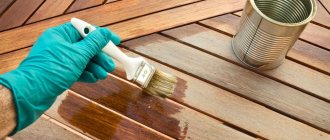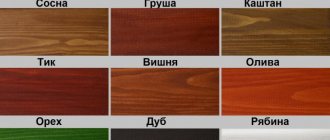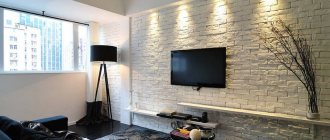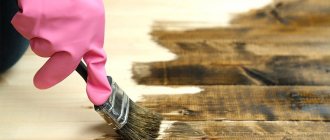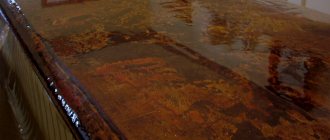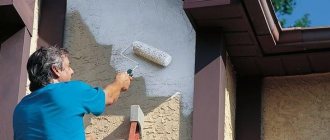Brick is a reliable and durable material, but external influences also have a negative impact on it. To maintain the attractiveness of the structure and extend its service life, it will be necessary to carry out strengthening work; brick varnish is often used for this purpose. The composition allows you to not change the appearance of the surface, but at the same time leaves a film coating that serves as a reliable protective barrier. For varnishing to be successful, you need to know the specifics of choosing the composition and its application. This will be discussed in detail below.
Varnishes for bricks for external and internal work
Brick varnish for exterior or interior use is a good option for obtaining protection from various influences. To treat the base in residential areas, it is necessary to use solutions that are not hazardous to human health.
When it comes to work on the outside of a building, it is necessary to use compounds that are resistant to natural factors. Accordingly, their reliability and strength should be increased.
Brick varnish for exterior or interior use is a good option for obtaining protection from various influences.
Why do you need to varnish brick?
Varnish for stone and brick helps to protect the material from exposure to water, temperature changes, wind, snow and other natural disturbances. The use of paint implies a change in the color of the base, and this option is not always suitable when designing a room; it may be necessary to preserve the original pattern.
The brickwork may suffer from mechanical shocks; the varnish layer will serve as a barrier so that the base does not collapse and repair work does not have to be carried out.
Varnish for stone and brick helps to protect the material from exposure to water, temperature changes, wind, snow and other natural disturbances.
Properties of paint and varnish
It is recommended to varnish a brick wall outside the building when climatic conditions require harsh exposure. The material itself looks beautiful, so not everyone wants to change its appearance, then varnishing is chosen. There are different varnishes on sale, but most compositions have common properties:
- Creating a film that prevents moisture penetration;
- Strengthen brickwork by being absorbed into the structure;
- They have a high level of adhesion;
- Resistant to chemicals and thinners;
- Withstands temperature changes;
- They are resistant to ultraviolet radiation;
- Increases the durability of the base;
- Create a beautiful decorative coating;
- Prevents the formation of mold and fungi.
It is recommended to varnish a brick wall outside the building when climatic conditions require harsh exposure.
Advantages and disadvantages
Varnish for decorative bricks or another type helps to obtain many positive properties, which is why these products are chosen to protect the base. Among the advantages of using varnishes, the following are noted:
- A water-repellent layer is created;
- Heat-resistant property when they are going to process stoves and other surfaces that are operated at high temperatures;
- Protection against the formation of salt deposits, the decorative property of the brick is preserved;
- Resistance to ultraviolet rays;
- You can create a matte or “wet stone” effect, obtaining the desired design in the end.
The disadvantages include the unpleasant odor that the solutions emit when used; after drying, the effect goes away. But when working, the master must protect himself with a respirator, gloves, and safety glasses.
Heat-resistant property when they are going to process stoves and other surfaces that are operated at high temperatures.
No. 3. Russian or foreign, which brand is better?
On the shelves in construction stores you can find many paints and varnishes with the same characteristics, but from different manufacturers. How can you not fall for the flashy label and buy truly effective formulations?
Pufas
This company ranks first in the ranking of the best paints and varnishes. This is a German manufacturer, which is one of the oldest concerns in the global paint and varnish production market. The company's product range includes more than two hundred types of finishing compounds for working with various materials. The company's products are successfully supplied to Russia and Ukraine. Pufas varnishes dry quickly, have no strong odors, and are easy to apply. They are distinguished by high quality standards and corresponding prices.
Petri
This is an American manufacturer whose products have proven themselves positively among domestic buyers. The line of coatings with the “wet stone” effect for brick bases is especially in demand. Petri impregnations prevent contamination, destruction of substrates and mechanical wear. They are also odorless and dry quickly.
Types of varnish for bricks
An important difference between varnish solutions is the component used in the base. The technical characteristics of the coating depend on the composition, so when choosing, you need to understand the features of the main options.
The technical characteristics of the coating depend on the composition, so when choosing, you need to understand the features of the main options.
Polymer varnishes
Polymer types are distinguished by their universal properties; they can be used indoors and outdoors where there is no heating. They create a layer that can withstand low temperatures, humidity, and are quick-drying. They can be used not only for processing brick, stone and other materials; they create a protective coating against rust with a high level of wear resistance.
Polymer products are easy to apply, so they are considered a good choice for beginners and are sold at an affordable price.
Polymer types are distinguished by their universal properties; they can be used indoors and outdoors where there is no heating.
Polyurethane varnish
Also classified as universal, applicable for internal and external surfaces. They receive reliable protection from natural influences and water; special pigments can be added to the composition to change the shade of the layer, if necessary. The surface acquires additional shine.
The use of varnish for application to external walls is popular due to its high level of protective characteristics against various influences.
They receive reliable protection from natural influences and water; special pigments can be added to the composition to change the shade of the layer, if necessary.
Solvent varnishes
This type is made from silicone resins, thanks to which the product penetrates well into the material, creating a reliable and elastic barrier. The colorless coating does not crack, remaining attractive for a long time.
Solvent compositions are highly flammable, so when using, you must follow safety rules.
This type is made from silicone resins, thanks to which the product penetrates well into the material, creating a reliable and elastic barrier.
Acrylic varnishes
Acrylic products are considered multi-component and are intended for interior work. The composition uses an organic type of thinners that protect the brickwork from the appearance of efflorescence, the layer does not crack and withstands mechanical shocks.
Acrylic products are considered multi-component and are intended for interior work.
Application Tips
If a person decides not to use the services of specialists, but to apply the product himself, then he should study a number of tips. There are certain rules for applying varnish to bricks for interior work.
The coating should be applied in a thin layer so that several approaches can be made. With this technique of use, drips will not appear. For brightness, it is permissible to paint the seams in a different color (more contrasting). Many useful tips can be found in the instructions for brick varnish for interior work.
Heat-resistant varnishes for bricks
Brick is often used when laying stoves; such structures require special heat-resistant varnishes. They must have the properties described below:
- Withstand high temperatures above 200-250 degrees;
- Resistance to water, so that mold and fungal formations do not appear over time;
- High level of adhesion, the composition must penetrate deeply into the material for high-quality protection;
- The presence of acrylic in the varnish so that drying takes less;
- Absolute colorlessness, then the decorative property will be good.
The following brands of similar varnishes are distinguished: KO85, KO815, Siltek-1.
Brick is often used when laying stoves; such structures require special heat-resistant varnishes.
Features of varnishing bricks
In order to carry out varnishing so that the coating protects the brick for many years, it is necessary to follow the working rules. Brick stain or varnish is applied in two layers, the operating temperature range varies from -10 to +30 degrees. Application tools include brushes, rollers, and spray guns.
In order to carry out varnishing so that the coating protects the brick for many years, it is necessary to follow the working rules.
Surface preparation
In order for the layer to lie evenly and beautifully on the surface, first prepare the base. If there is another old finish, it is necessary to remove it by heating it with a hair dryer and using a thinner. Remains of cement mortar are removed with a chisel and hammer.
On brickwork, small defects are repaired with latex-based paint, and the excess part is sanded with sandpaper. The cracks need to be widened and filled with mortar, then sanded to make them even with the rest of the surface. Then the following actions are performed:
- The base is cleaned of all types of contaminants; you can use a soap solution.
- Wait for the brick to dry.
- If efflorescence still remains, then wash with dishwashing detergent using a hard sponge.
- They wait again until the brick has dried.
- Move on to priming, take a deep penetration solution, it is advisable to use a product of the same brand as the varnish.
In order for the layer to lie evenly and beautifully on the surface, first prepare the base.
Subtleties of working with varnish
You can varnish a dry surface; choose a roller with long bristles up to 2 centimeters, or a brush with a thick, stiff brush. It is convenient to work with a spray bottle, it is easy to get a thin layer, but the device is expensive.
At the edges of the strips, the layer should overlap slightly with the other; start coating from the top corner. Multilayer coating is done by drying each layer. Optimal conditions for work will be calm, dry and warm weather.
Caring for the base is easy; you can simply remove dirt with a cloth soaked in soapy water.
Multilayer coating is done by drying each layer.
How to calculate material consumption
To understand how many cans of varnish to purchase, you need to calculate the area of the surface to be treated and multiply with the average consumption indicated on the label. The standard average consumption is 100-200 grams/per square meter.
But you should know that the indicator is influenced by the following points:
- Type of base, texture;
- Temperature indicators during operation;
- Composition of the product.
To understand how many cans of varnish to purchase, you need to calculate the area of the surface to be treated and multiply with the average consumption indicated on the label.
Varnish manufacturers
There are many varnishes available on the construction market that are suitable for processing brick. For this reason, it is difficult for beginners to make a choice; then you can focus on popular manufacturers:
- Pufas, the varnish of this brand adds a beautiful shine to the material, creating reliable protection against water;
- Petri, a popular polyurethane varnish that is resistant to abrasion and dirt, increasing the service life of the brick;
- Neomid, with a matte effect, does not emit an unpleasant odor, can be used inside a building, creating protection from water and biological formations;
- KrasKo produces several high-quality varnishes for brickwork.
Can be used inside a building, creating protection against water and biological formations.
Varnishes for brick surfaces are used to increase the durability of the material. There are several types of varnishes that can create a film coating that qualitatively protects the base from moisture, ultraviolet radiation, temperature changes and other influences, while maintaining the appearance of the brick unchanged. You can get a matte, semi-matte or glossy finish, improving the decorative properties.
Properties
Previously, no one covered brick walls with anything. Not everyone today is concerned with finishing brickwork. Whether finishing is needed if the brick already looks great can be understood by assessing its performance characteristics.
No matter how good the masonry is, in regions with a harsh climate, and in Russia there are plenty of such areas, “varnish help” will not hurt neatly laid out rectangles. The facade of a private house, treated with varnish, gains additional attractiveness and does not require repairs much longer than its untreated “brothers”.
Bricks coated with a special varnish composition:
- protected from moisture penetration;
- become more durable due to the product penetrating deep into the building material and partially changing its structure;
- lose sensitivity to various chemicals and solvents;
- do not lose their original color when exposed to ultraviolet radiation;
- gain increased resistance to high and low temperatures;
- become more attractive;
- extend the service life;
- receive protection from fungal diseases and mold;
- gain the ability to repel dirt.
Varnished surfaces turn out matte or glossy, and sometimes acquire a “wet stone” effect. The resulting decorative properties depend on the type of material used.
